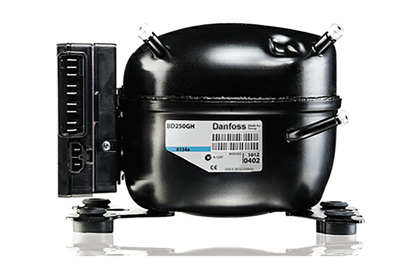To tell if your LG refrigerator compressor is bad, you need to check for some common signs and symptoms, such as the fridge not cooling enough or at all, the compressor making unusual noises or vibrations, the compressor getting very hot or not starting at all, or the fridge displaying an error code related to the compressor.
If you notice any of these signs, you may need to contact LG customer service or a professional repair service to fix or replace your compressor.
How to diagnose a bad compressor in an LG refrigerator step by step
Here are the detailed steps to diagnose a bad compressor in an LG refrigerator:
- Step 1: Check the temperature of the fridge and freezer compartments. The first and most obvious sign of a bad compressor is that your LG refrigerator is not cooling enough or at all. You can use a thermometer to measure the temperature of the fridge and freezer compartments, or check the digital display if your fridge has one. The ideal temperature for the fridge compartment is between 34°F and 40°F, and for the freezer compartment is between 0°F and 5°F. If the temperature is higher than these ranges, it means that your compressor is not working properly or efficiently.
- Step 2: Check the noise and vibration of the compressor. The second sign of a bad compressor is that your LG refrigerator is making unusual noises or vibrations. You can locate the compressor at the back or bottom of your fridge, and listen for any loud humming, buzzing, clicking, or rattling sounds. You can also touch the compressor gently and feel for any excessive vibration or heat. These sounds and sensations indicate that your compressor is struggling to run or has failed completely.
- Step 3: Check the error code on the display panel. The third sign of a bad compressor is that your LG refrigerator is displaying an error code on the display panel. Some LG refrigerators have sensors and alarms that can detect and alert you when there is a problem with the compressor or other components. The error code may vary depending on your fridge model, but some common ones related to the compressor are:
- E1: This means that there is a problem with the ice maker fan motor or sensor.
- E2: This means that there is a problem with the freezer fan motor or sensor.
- E3: This means that there is a problem with the condenser fan motor or sensor.
- E4: This means that there is a problem with the defrost heater or sensor.
- E5: This means that there is a problem with the evaporator fan motor or sensor.
- E6: This means that there is a problem with the defrost control assembly.
- E7: This means that there is a problem with the water valve assembly.
- E8: This means that there is a problem with the ice maker assembly.
- E9: This means that there is a problem with the linear/inverter compressor.
If you see any of these error codes on your display panel, you should refer to your LG refrigerator’s user manual for more information and troubleshooting tips.

How to troubleshoot a bad compressor in an LG refrigerator
If you have diagnosed that your LG refrigerator has a bad compressor, you may need to contact LG customer service or a professional repair service to fix or replace your compressor. However, before you do that, you can try some simple troubleshooting steps to see if you can resolve the issue yourself. Here are some troubleshooting tips for a bad compressor in an LG refrigerator:
- Unplug and plug back in your refrigerator. Sometimes, a simple power reset can fix some minor glitches or errors with your refrigerator’s compressor or other components. You can unplug your refrigerator from the power outlet for about 10 minutes, then plug it back in and see if it works normally.
- Check and clean the condenser coils and fan. The condenser coils and fan are located at the back or bottom of your refrigerator, and they help dissipate the heat generated by your refrigerator’s compressor and motor. If they are dirty or dusty, they can reduce the cooling capacity and performance of your refrigerator, which can lead to longer and more frequent cycles or overheating of your compressor. You should clean the condenser coils and fan at least once every six months or more often if they are dirty or dusty. You should use a vacuum cleaner with a brush attachment to gently remove any dust or dirt from the condenser coils and fan. You should also unplug your refrigerator before cleaning them for safety reasons.
- Check and replace the start relay and capacitor. The start relay and capacitor are located near the compressor, and they help start and run the compressor. If they are faulty or burned out, they can prevent the compressor from starting or running properly or efficiently. You can test the start relay and capacitor with a multimeter to see if they have continuity or resistance. If they don’t, you should replace them with genuine LG parts. You should also unplug your refrigerator before replacing them for safety reasons.
To tell if your LG refrigerator compressor is bad, you need to check for some common signs and symptoms, such as the fridge not cooling enough or at all, the compressor making unusual noises or vibrations, the compressor getting very hot or not starting at all, or the fridge displaying an error code related to the compressor. If you notice any of these signs, you may need to contact LG customer service or a professional repair service to fix or replace your compressor.


